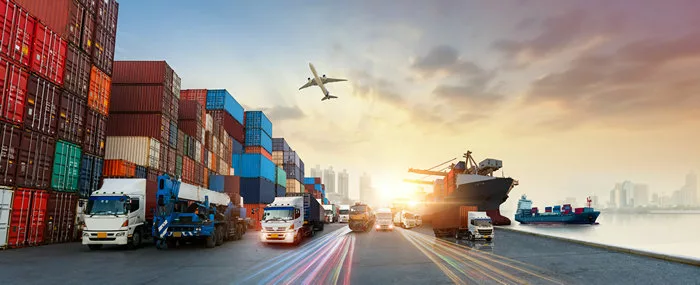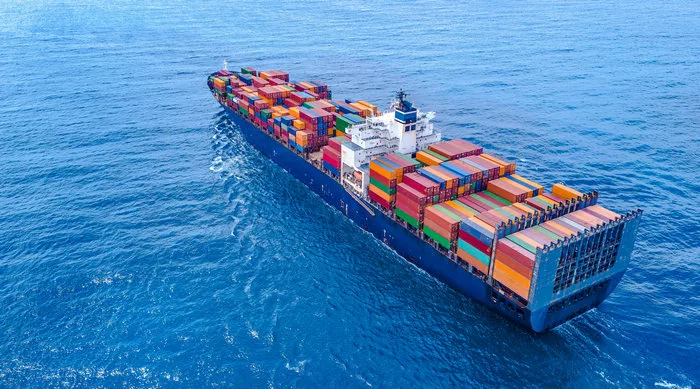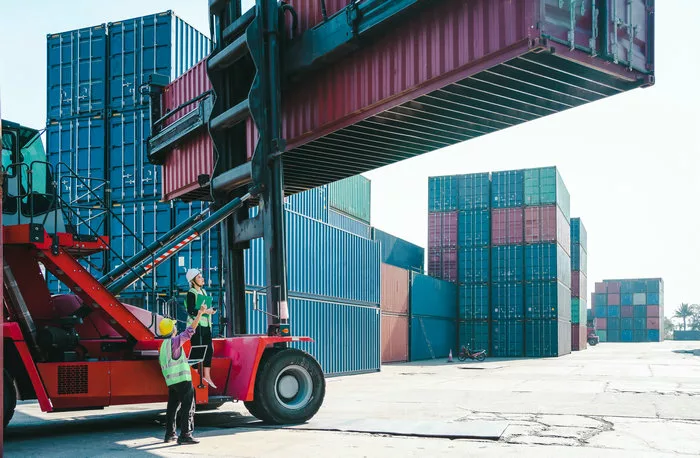Shipping from China to Germany has become increasingly crucial as trade between these two countries continues to grow. With a variety of shipping methods available, businesses and individuals must understand the different options and factors that play a role in shipping goods between these countries.
By selecting the correct shipping method and considering costs, transit time, and customs regulations, you can ensure efficient and cost-effective delivery of your goods.

Whether you are importing goods for your business or personal use, choosing the correct shipping method is essential. You can opt for sea freight, air freight, or even express delivery services depending on your budget, timeframe, and the type of goods you are shipping. Additionally, it’s essential to familiarize yourself with the vital shipping ports in both countries and the corresponding logistics and supply chain processes to avoid any complications.
Navigating the complexities of customs and import taxes between China and Germany may seem challenging at first, but with proper planning and documentation, you can facilitate a smooth shipping experience. Factors such as freight services, shipping carriers, weight and volume, and insurance play a crucial role in the shipping process.
Understanding these regulations minimizes potential issues or delays.
Key Takeaways
- Choose the correct shipping method based on budget, timeframe, and type of goods for efficient delivery.
- Familiarize yourself with China and Germany’s best shipping ports and logistics processes.
- Proper planning and documentation can help navigate customs and import taxes for a smooth shipping experience.
Shipping Methods
When shipping goods from China to Germany, it’s essential to consider the various available shipping methods to decide which mode of transport is best suited for your needs. This section will discuss three primary shipping methods: Air Freight, Sea Freight, and Rail Freight.
Air Freight
Air freight is the fastest option for shipping goods from China to Germany. It is ideal if you require speedy delivery of your products or have highly perishable items. This mode of transport allows you to send smaller shipments and is generally more expensive than sea or rail freight. To make the best decision on whether to use air freight, consider factors such as the size and weight of your cargo and the shipment’s urgency.
Sea Freight
Sea freight is the most popular option for shipping goods from China to Germany, especially for larger and heavier shipments. This mode of transport includes two options: sea FCL (Full Container Load) and sea LCL (Less Container Load).
- Sea FCL is suitable for shipping larger volumes, usually 12 pallets or more, which can completely fill a shipping container. This method reduces transport costs per unit and is advantageous for large shipments.
- Sea LCL is an option for smaller shipments that cannot fill an entire container. In this case, your cargo is consolidated with other shipments to best use container space.
The major drawback of sea freight is the longer transit time compared to air freight. However, it offers lower shipping costs, making it an attractive option for businesses looking to save on transportation expenses.
Rail Freight
Another shipping method to consider is rail freight. While it is less common compared to air or sea freight, it can be an alternative option for transporting goods from China to Germany, particularly for medium-sized shipments. Rail freight offers a good balance between transit time and costs, being faster than sea freight but slower than air freight and generally more affordable than air shipping.
In conclusion, selecting the appropriate shipping method for your cargo requires a thorough assessment of factors such as urgency, size, and weight of the shipment, as well as your budget.
Consolidation and Deconsolidation

In shipping between China and Germany, understanding consolidation and deconsolidation is crucial. These processes help optimize cargo shipments, reduce costs, and improve efficiency.
Consolidation is the process of combining multiple smaller shipments into a single, larger shipment. Doing this allows you to take advantage of economies of scale, as it lowers costs per unit. Also, it often leads to better cargo rates and easier cargo management. With consolidation, your freight is usually shipped in a container space with other shipments.
Benefits of consolidation include:
- Cost-effective: Consolidating shipments saves you on transportation costs due to bulk rates.
- Improved tracking: Since shipments are combined, tracking your cargo’s progress may become more accessible.
- Reduced paperwork: One consolidated shipment means fewer individual documents to manage.
On the other hand, deconsolidation is the process of breaking down the large shipment into its original, smaller shipments upon arrival at the destination port. This separation allows each consignee to receive their respective shipments.
During deconsolidation:
- The consolidated shipment passes through customs clearance.
- It is separated into individual shipments as per the original packing.
- Individual shipments are then sent to their final destinations.
While consolidation and deconsolidation have their advantages, some drawbacks need to be considered:
- Longer transit time: Shipping generally takes slightly longer when sharing a container, as the cargo must be consolidated at the origin and sorted at the destination.
- Potential delays: As the shipment needs to be separated at the destination, there might be delays in customs clearance and final delivery.
In summary, consolidating and deconsolidating services while shipping from China to Germany can lower costs and improve efficiency. However, be prepared for slightly longer transit times compared to standard FCL shipping.
Estimated Period for Shipping from Different Chinese Ports to Germany
In the table below, you will find the estimated time frame you should expect to receive your goods in Germany, after shipping from China.
FCL Ocean Freight Shipping Costs
| Departure Port | Destination Port | Cost for 20’’ Container (USD) | Cost for 40’’ Container (USD) | Estimated Transit Duration |
| Ningbo | Hamburg | 750 | 1350 | 38 |
| Shenzhen | Hamburg | 680 | 1200 | 29 |
| Shanghai | Hamburg | 600 | 1050 | 38 |
LCL Ocean Freight Shipping Costs
| Departure Port | Destination Port | Price per CMB (USD) | Estimated Transit Days |
| Ningbo | Hamburg | 20 | 36 |
| Bremen | 25 | 37 | |
| Shenzhen | Hamburg | 80 | 30 |
| Bremen | 70 | 31 | |
| Shanghai | Hamburg | 20 | 36 |
| Bremen | 25 | 37 |
Estimated Air Freight Shipping Costs
| Departure City | Range | Destination Port | Price per KG | Estimated Delivery time (days) |
| Shanghai | Rate for 100KGS – 200KGS | Frankfurt (FRA) | 3 | 1 |
| Hannover (HAJ) | 3.3 | 3-4 | ||
| Hamburg (HAM) | 3.3 | 3-4 | ||
| Rate for 300 KGS – 1000KGS | Frankfurt (FRA) | 3 | 1 | |
| Hannover (HAJ) | 3.3 | 3-4 | ||
| Hamburg(HAM) | 3.3 | 3-4 | ||
| Rate for 1000KGS+ | Frankfurt (FRA) | 2.9 | 1 | |
| Hannover (HAJ) | 3.1 | 3-4 | ||
| Hamburg(HAM) | 3.1 | 3-4 | ||
| Shenzhen | Rate for 100KGS-299KGS | Hamburg (HAM) | 5 | 4-5 |
| Leipzig (LEJ) | 3.5 | 1 | ||
| Frankfurt(FRA) | 3.1 | 4-5 | ||
| Rate for 300KGS-1000KGS | Hamburg(HAM) | 4.8 | 4-5 | |
| Leipzig(LEJ) | 3.5 | 1 | ||
| Frankfurt(FRA) | 3.1 | 4-5 | ||
| Rate for 1000KGS+ | Hamburg(HAM) | 4.5 | 4-5 | |
| Leipzig(LEJ) | 3 | 1 | ||
| Frankfurt(FRA) | 2.8 | 4-5 |
Our Rates for Rail Freight Services
| Departure City | Destination City | Range | Price per CBM | Estimated Transit Time |
| Zhengzhou | Rate for 1-4.99 CBM | Hamburg | 195 | 16-19 |
| Munich | 195 | 17-20 | ||
| Duisburg | 220 | 17-20 | ||
| Rate from 5-9.99CBM | Hamburg | 190 | 16-19 | |
| Munich | 190 | 17-20 | ||
| Duisburg | 215 | 17-20 | ||
| Rate for 10-28 CBM | Hamburg | 185 | 16-19 | |
| Munich | 185 | 17-20 | ||
| Duisburg | 210 | 17-20 | ||
| Rate for 40 HQ | Hamburg | $7800/40HQ | 16-19 | |
| Munich | $7800/40HQ | 17-20 |
Please note that you should contact us immediately, if you need a personalised assessment and quote for your shipping needs. We will be delighted to give you comparative rates and ship your goods fast.
Factors Affecting Transit Time

This section will discuss these factors and how they can influence shipping times.
The mode of transport is a significant factor in determining transit time. Air freight is the quickest option, typically taking 7 to 10 days. On the other hand, sea freight takes longer, with transit times ranging from 20 to 30 days. Remember that these estimates are subject to change based on various factors.
Another influential factor is the season. During peak seasons such as mid-August to mid-October, the demand for shipping services increases due to increased trade ahead of the holiday shopping period, Chinese New Year, Golden Week, and Dragon Boat Festival. You might experience longer transit times and higher shipping rates during these periods.
The ports of departure and arrival can also affect the transit time. Choosing a port close to your cargo’s origin and destination will speed up shipping times. However, some ports may experience congestion, which can cause delays in the shipping process.
Additionally, customs clearance can impact transit times. This process involves inspections and paperwork, which may take longer if there are complications or inconsistencies. Ensuring that your shipping documents are in order and meeting all requirements can prevent delays in customs clearance.
Lastly, the shipping company chosen can determine the efficiency of the transit process. When selecting a shipping company, consider its reputation, customer service quality, and previous clients’ feedback. Working with a reliable and efficient shipping company can save you time and reduce the likelihood of delays.
To summarize, various factors can affect the transit time when shipping from China to Germany, such as the mode of transport, seasonality, ports of departure and arrival, customs clearance, and the shipping company. Plan accordingly, considering these factors, to ensure timely delivery.
Full Container Load and Less than Container Load
When shipping goods from China to Germany, you will encounter two primary containerized shipments: Full Container Load (FCL) and Less than Container Load (LCL).
Full Container Load (FCL) refers to the shipment method where your goods fill an entire shipping container. This option suits larger shipments or when you have enough cargo to fill a complete container. FCL shipping offers several advantages, such as:
- Faster transit times than LCL due to the reduced need for handling at the origin and destination ports.
- Lower risk of cargo damage, as there are fewer opportunities for your goods to be mishandled.
- Cost-effectiveness for larger shipments, as the cost per unit, is often lower for FCL than LCL.
On the other hand, Less than Container Load (LCL) is a shipping option for smaller shipments that do not require a full container. Your goods will be shipped with other boxes or pallets in the same container when using LCL. LCL shipping has its own set of benefits, such as:
- Flexibility for the shipment of smaller quantities of goods may not warrant the cost of a full container.
- More frequent departures, as LCL shipments can be consolidated with other cargo quickly.
- Cost savings for smaller shipments, as you only pay for the space your cargo occupies in the container.
However, LCL shipping does have its drawbacks, including:
- Longer transit times than FCL, as there is a need for cargo consolidation at the origin port and deconsolidation at the destination port.
- A higher risk of cargo damage as your goods may be handled more frequently.
When deciding between FCL and LCL shipping, consider your shipment size, budget, and desired transit time. If your shipment is larger (typically more than 2 CBM) and you seek faster, more reliable transit times, FCL is the better choice. Conversely, LCL may be a more suitable option if your shipment is smaller and you are willing to accept slightly longer transit times to reduce shipping costs.
Weight and Volume

The weight and volume of your shipment will impact the shipping costs and help you determine the most efficient way to transport your goods, considering potential size and weight restrictions for different shipping methods.
Shipping carriers, such as UPS, generally have size and weight limits for standard packages. For example, packages can be up to 150 lbs. and 108 inches long. Your specific shipment may have different package sizes and weight limits. Packages above specific size and weight combinations may require freight shipping services.
When shipping via ocean freight, there are a couple of container options that can accommodate different cargo volumes:
- 20-foot container: This size can handle a cargo volume of up to 1,172 cubic feet, making it suitable for smaller or less-than-container-load (LCL) shipments.
- 40-foot container: With a maximum volume of 2,389 cubic feet, a 40-foot container is ideal for larger or full-container-load (FCL) shipments. The Hamburg port, Germany’s largest ocean port, handles over 8 million TEUs (twenty-foot equivalent units) in annual container throughput.
If you choose air freight, there are no standard container sizes. Instead, airlines use unit load devices (ULDs) to consolidate cargo. The weight and volume of your shipment will play a significant role in calculating the cost. Generally, air freight charges are based on the space your cargo occupies on the airplane, considering the actual and volumetric weights.
To determine the volumetric weight of your shipment, use the following formula:
Volumetric weight (kg) = (Length x Width x Height in cm) / 6,000
Remember to compare your shipment’s actual and volumetric weight, as the higher value will be used to calculate the shipping cost.
By considering the weight and volume of your shipment from China to Germany, you can better estimate your shipping costs and choose the most suitable shipping method. It is essential to have a clear understanding of these factors to ensure a smooth and efficient shipping process.
Insurance
Insurance provides financial protection if your goods are damaged or lost during transit. You should be aware of a few types of insurance coverage.
Single Coverage is suitable if you’re shipping one-time shipments. This type of coverage insures your cargo for a specific shipment.
Open Coverage is better if you have multiple shipments over a specific time. This type of insurance covers all shipments during the specified period.
General Average Coverage is another type of insurance you should consider. If any cargo on the ship is lost or the entire ship is sinking, your insurer will cover your part of the joint costs.
When choosing a shipping insurance company, evaluating their premiums and reputation is essential.
Please note that it is optional for a freight forwarder to insure your shipment. You are responsible for arranging for insurance coverage if you deem it necessary. To calculate your insurance premium, you can contact the insurance company or your freight forwarder for a quote.
Remember that the transit time from China to Germany depends on several factors, so there is no definite shipping time. However, this estimate does not account for possible delays due to the customs clearance process. As such, it’s crucial to have proper insurance coverage to protect your cargo throughout the shipping process.
Types of Goods

Understanding the various types of goods will allow you to choose the appropriate shipping method and packaging for your products, ensuring their safe arrival.
Bulk goods refer to items that are transported in large quantities, often without individual packaging. Examples of bulk goods include grains, coal, and metals. These goods usually require specialized equipment and shipping solutions, such as bulk carriers or freight trains.
Dry goods are non-perishable items that don’t require refrigeration or temperature control during transportation. Examples include clothing, textiles, electronics, and furniture. When shipping dry goods, it’s essential to use proper packaging materials, such as cartons or pallets, to protect your products from damage.
Machinery encompasses various industrial equipment and devices, from small tools to large-scale production machinery. Shipping machinery requires specialized handling and packing solutions due to its size, weight, and complexity. To ensure the safe transportation of machinery, you may need to use flat racks or open-top containers.
Shipping goods is a general term that encompasses all types of products that can be shipped from one location to another. This category may include bulk goods, dry goods, machinery, liquids, and any other items you plan to transport.
Liquids are any substances that flow freely and take the shape of their container. Examples include chemicals, oils, and beverages. When shipping liquids, it’s crucial to use the appropriate packaging materials, such as drums or tank containers, to prevent leaks and spills during transit.
Understanding the various types of goods and their specific shipping requirements is essential when planning to ship products from China to Germany. By doing so, you can ensure the safe and efficient transportation of your goods, ultimately saving time and money.
Logistics and Supply Chain

When it comes to shipping from China to Germany, understanding the logistics and supply chain is crucial. As a major trade partner, both countries rely on efficient transportation methods for handling cargo and meeting the high demands of consumers.
To ensure the smooth flow of goods, you have a variety of transportation methods to choose from, including ocean freight, air freight, and rail freight. Each method has advantages and drawbacks, and choosing the right one depends on your needs and requirements.
- Ocean Freight: This is the most popular shipping method due to its cost-effectiveness and ability to handle large cargo volumes. However, ocean transport can take several weeks to deliver goods from China to Germany.
- Air Freight: If you require faster delivery or have perishable cargo, air freight is a reliable option. This method can transport goods within days, but it comes at a premium cost compared to ocean freight. Remember that air freight has size and weight restrictions, which might impact your shipment.
- Rail Freight: The rail freight option is a viable alternative for shipping goods between China and Germany. It balances speed and cost-efficiency, with transit times generally faster than ocean freight but slower than air freight. However, rail networks may not reach every location, so consider the accessibility of rail transport to your destination.
Working with logistics experts is essential for navigating the complex supply chain between China and Germany. They can advise you on the best transportation method based on your budget, cargo type, and required delivery time. By collaborating with these professionals, you can streamline your logistics, minimize risks, and ensure the successful delivery of your goods to their destination.
Frequently Asked Questions
1. How long does shipping take between China and Germany?
Shipping freight times between China and Germany vary depending on the method of transportation used. Air freight is the fastest option for express shipping, with delivery times usually within a few days. On the other hand, sea freight is the slowest option, taking approximately 20-25 days to reach Germany. Rail freight typically takes 15-20 days, depending on the route and customs clearance processes at both ends.
2. What are the costs for air freight shipping from China to Germany?
The cost of air freight from China to Germany depends on various factors, such as the type and weight of the goods, the distance to the destination, and the urgency of the shipment. While air freight can be more expensive than other methods, it is also the fastest. You can use online tools like Freightos or contact your preferred shipping company for a detailed quote to get accurate shipping cost estimates.
3. Which is the most affordable shipping method from China to Germany?
Sea freight is considered the most affordable shipping method between China and Germany for large quantities of goods. However, it is also the slowest option. If your shipment requires a balance between cost and transit time, rail freight is a suitable option, as it is cheaper than air freight and faster than sea freight.
4. What are the import taxes when shipping goods from China to Germany?
When importing goods from China to Germany, you may need to pay import taxes, including customs duties, value-added tax (VAT), and other fees. The exact taxation depends on the type and value of the goods and the agreements between China and Germany. You can consult a customs broker or local authority to get accurate information on your shipment’s applicable tax rates.
5. What are the rates for rail freight from China to Germany?
Rail freight rates from China to Germany vary depending on factors like the type and weight of the goods, the origin and destination points, and the specific service you choose. Generally, rail freight is less expensive than air freight but faster than sea freight. To get accurate rail freight rates for your shipment, it’s best to contact a logistics provider or freight forwarder for a custom quote.
Consider Our Services Today
When shipping from China to Germany, you want a fast, reliable, and cost-effective service. Our company provides just that, ensuring a seamless and hassle-free experience.
We offer various services tailored to your needs, including door-to-door courier services, ocean freight, and warehousing options. By using our services, you will receive access to a vast network of logistics providers, which guarantees the best possible solution for your shipping needs.
Our fixed pricing ensures no hidden costs, allowing you to work within your budget. Additionally, our parcel pick-up service in over 120 cities across mainland China saves you time and effort. You can rest assured that your goods will be handled with care, thanks to our professional packing and repacking services.
Not only do we cater to document and parcel shipments, but we also handle oversized cargo such as pallets. We keep you informed throughout the entire process with our Track & Trace solution, allowing you to monitor your shipment in real time.
Explore our top-notch services today, and alleviate the stress of managing complex shipping and logistics processes.
Don’t hesitate to contact our knowledgeable and supportive team via the customer contact form on our website to assist with any questions or concerns.
